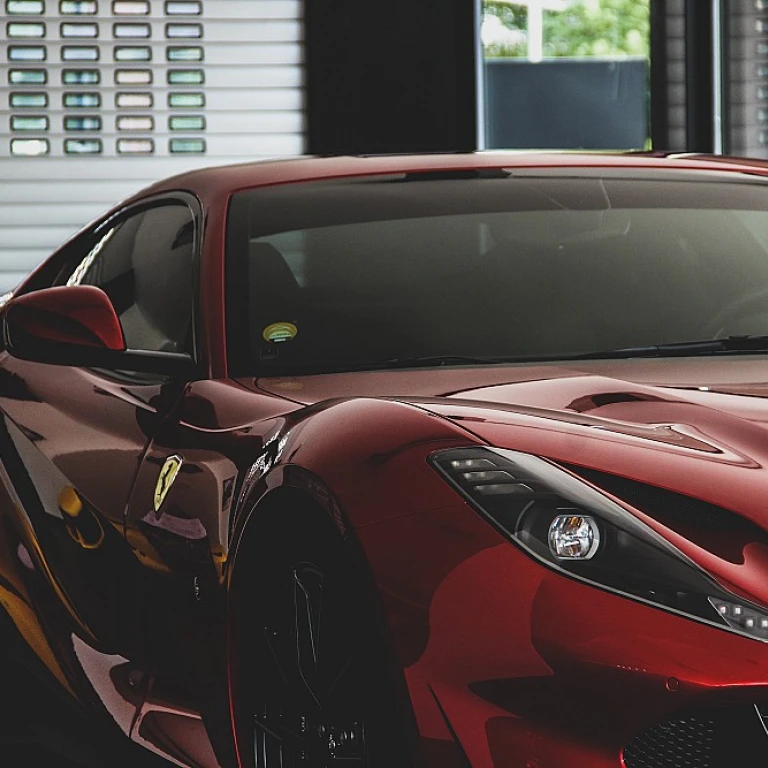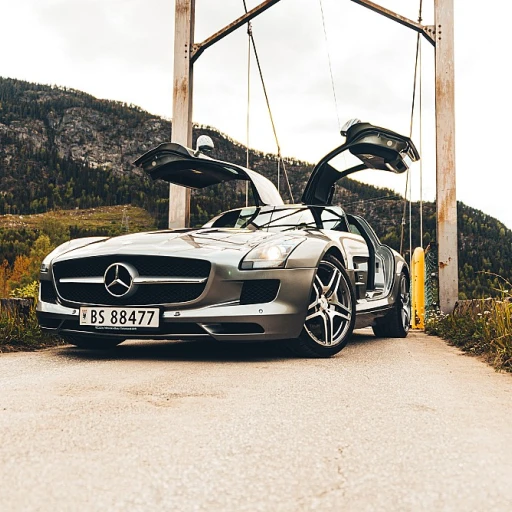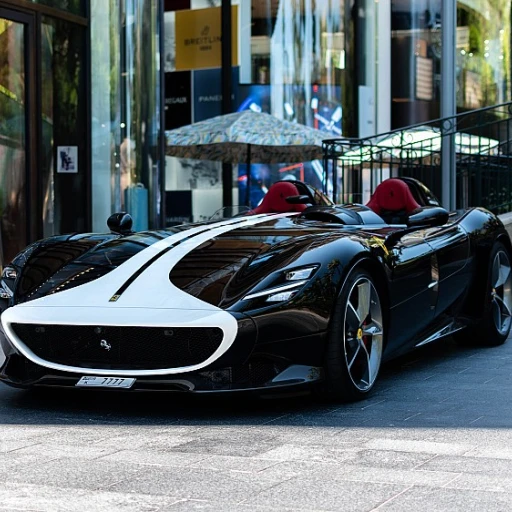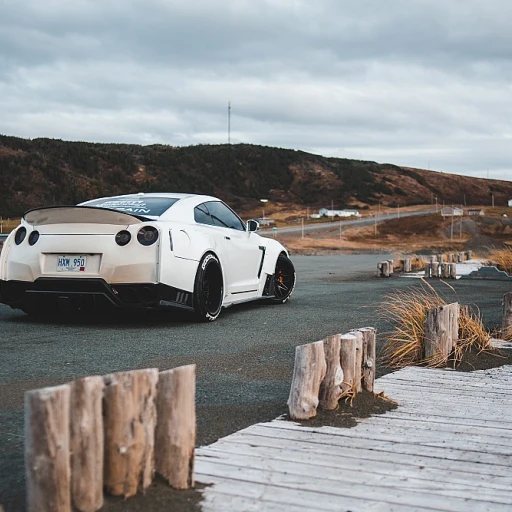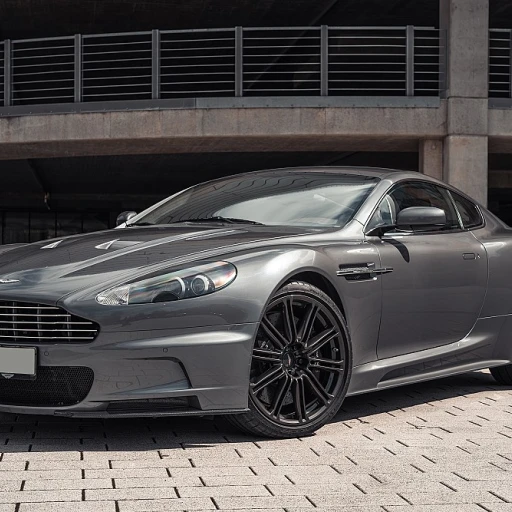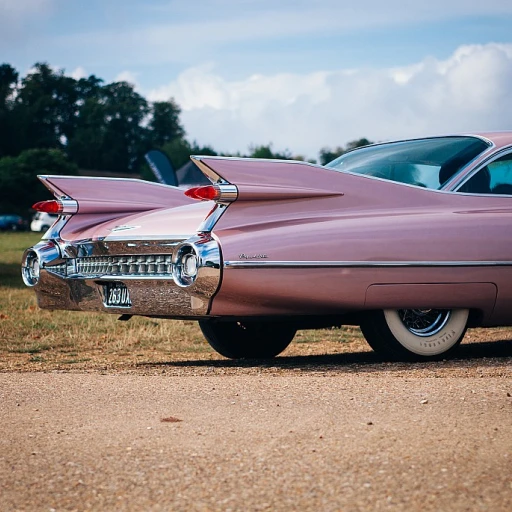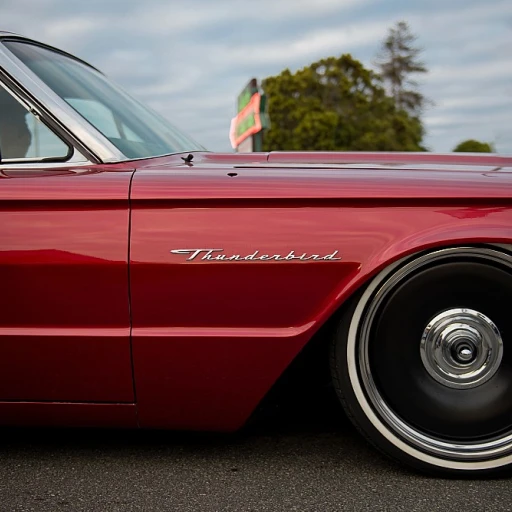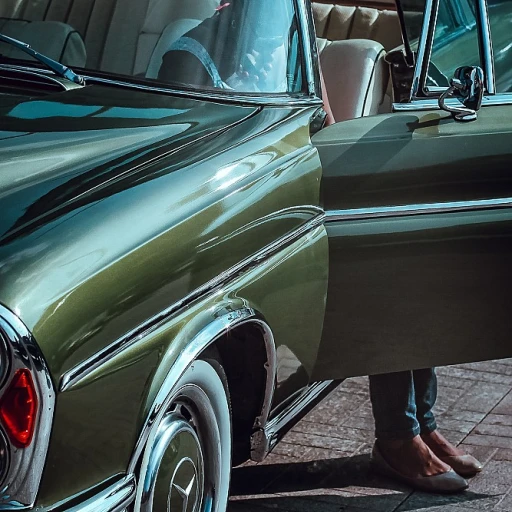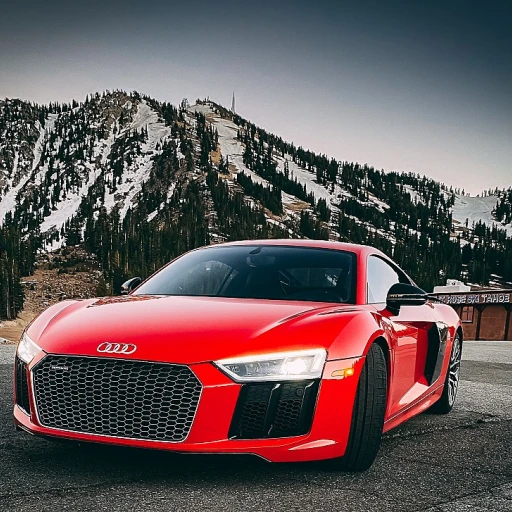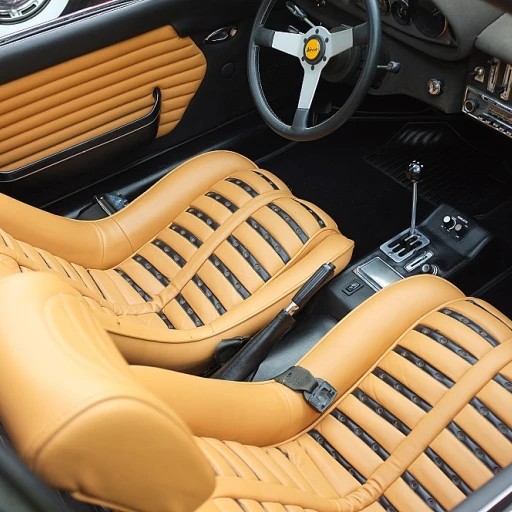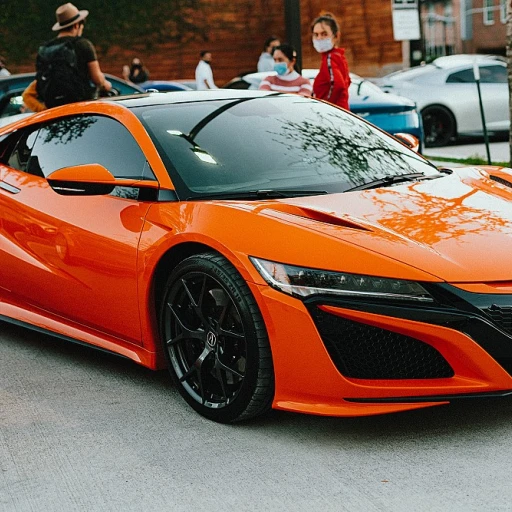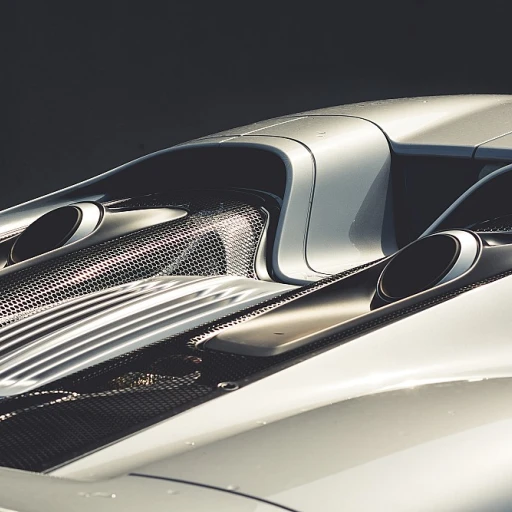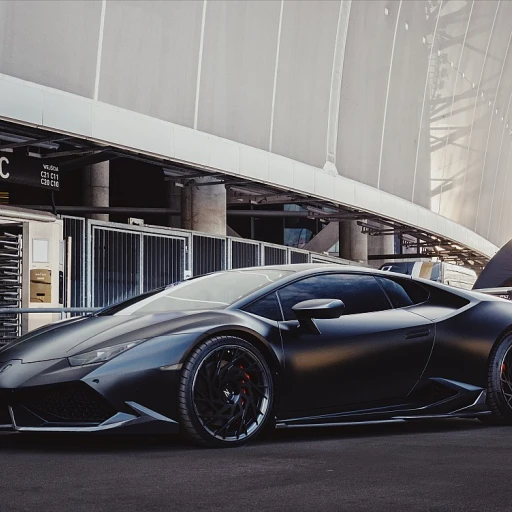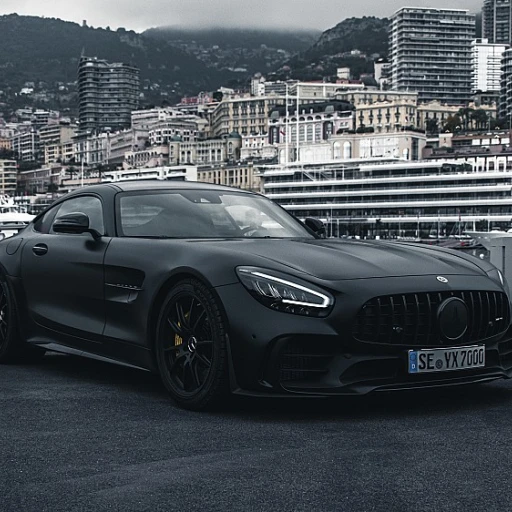
The allure of classic luxury cars
The magic of driving history
There's something inexplicably mesmerizing about old luxury cars. These vehicles, often treated more like precious artifacts than mere cars, tell the story of an era when design, craftsmanship, and performance reached their prime. As you cruise down the road in a Cadillac from the 1950s or sit behind the wheel of a classic Mercedes-Benz, it's not just the engine purring or the plush leather sears talking. It's history, culture, and engineering prowess all rolled into one elegant package.
Why nostalgia persists
Why do so many people hold on to these old vehicles? Part of it is the sheer quality of these cars. Take, for instance, Ferrari's legendary V12 engines introduced in the 1960s – marvels of engineering that still impress enthusiasts today. Then you've got the timeless design elements. Who can forget the unique fin-tail designs of 1950s Cadillac models or the streamlined elegance of a classic Rolls Royce? These cars symbolize a time when luxury wasn't about technology but about the touch, feel, and experience behind the wheel.
Unexpected emotional connections
Driving an old luxury car often brings back personal memories. Whether it's riding in your dad’s vintage BMW or seeing a classic Ford Mustang that resembles the one your neighbor owned, each car carries not just its history but personal stories too. This emotional connection compounds the desire to own and preserve these vehicles. That explains why there’s a robust market for classic luxury cars today.
Iconic brands and models
Iconic old luxury cars brands and models
Cadillac: the american standard of luxury
Cadillac has been synonymous with American luxury since the early 20th century. Known for its powerful V8 engines and opulent interiors, Cadillac stood at the apex of U.S. luxury cars. The Cadillac Eldorado, with its iconic tailfins, represents a bygone era of automotive design and innovation. General Motors (GM), which owns Cadillac, continues to emphasize the brand's historical significance while evolving its lineup. According to the NHTSA, Cadillac's safety enhancements were unparalleled for their time.Mercedes-benz: german engineering at its finest
Mercedes-Benz has a long-standing reputation for producing some of the most reliable and luxurious vehicles globally. Established in Germany, the brand introduced many technological firsts, including the antilock braking system (ABS) in the 1970s. The Mercedes-Benz S-Class, often hailed as the "best luxury car" by various auto enthusiasts, serves as an epitome of timeless elegance and advanced engineering. “Mercedes-Benz has always set the standard in luxury and innovation,” says automotive expert Scott Oldham from Edmunds.Rolls-royce: the epitome of elegance
Nothing screams luxury more than a Rolls-Royce. The brand has always been about unparalleled craftsmanship and bespoke options, making each car a unique masterpiece. The Rolls-Royce Silver Shadow, for instance, represented a significant leap forward with its innovative self-levelling suspension and luxurious amenities. Rolls-Royce vehicles are a favorite among celebrities and royalty, including Queen Elizabeth II, who owns several vintage models. A study by the IIHS highlights the brand's consistent focus on safety and reliability.Bmw: the ultimate driving machine
BMW's reputation for combining performance with luxury is well deserved. The BMW 7 Series has long been the flagship model, showcasing the brand's commitment to pioneering technology and driving dynamics. BMW has a substantial following among car enthusiasts, who appreciate the brand's balanced focus on performance, luxury, and advanced features. BMW's emphasis on rear-wheel drive and powerful inline-six engines makes it a standout in the luxury segment.Lexus: japanese precision and luxury
Lexus, Toyota’s luxury arm, has carved out a niche for itself by offering unparalleled reliability and comfort. Models like the Lexus LS have continually set benchmarks for what luxury sedans can achieve. Known for their smooth rides and innovative features, Lexus vehicles offer a compelling mix of modern technology and traditional luxury. The brand's emphasis on ergonomic design and attention to detail has garnered a loyal customer base.Volvo: nordic sophistication
Swedish automaker Volvo has long been celebrated for its safety innovations and minimalist yet luxurious designs. The Volvo 240 and 740 series, for instance, have been noted for their durability and comfort. Volvo's iconic front-wheel-drive models have set the standard in terms of safety features, with innovations like the three-point seatbelt. Today, Volvo continues to receive accolades from both IIHS and NHTSA for its unwavering focus on safety and sustainability.Case study: the rise of certified pre-owned luxury cars
The market for certified pre-owned luxury cars has seen a surge recently. Brands like Mercedes-Benz and Lexus have established robust certified pre-owned programs, ensuring buyers can find high-quality vehicles at more affordable prices. A recent report from J.D. Power highlights that certified pre-owned luxury cars can retain value better than their non-certified counterparts. This trend is not only boosting sales but also solidifying brand loyalty.Want to know more about how to determine if your luxury car is an asset or an expense? Check this out for more insights.Engineering marvels of the past
Under the hood: engineering marvels of the past
Classic luxury cars are a testament to engineering excellence that defined an era. Whether it was the smooth purr of a Cadillac's V8 engine or the impeccable harmony of a Mercedes-Benz automatic transmission, these vehicles exhibited an unmatched sophistication.Take the Mercedes-Benz W100, known for its 6.3-liter V8 engine producing 250 horsepower. Back in the 1960s, this was a marvel. The automatic transmission, a 4-speed marvel often integrated, allowed for a seamless driving experience, making it one of the best luxury cars of its time.
Innovative technology ahead of their time
These cars weren't just powerhouses; they were pioneering in technology. Audi, with its Quattro all-wheel-drive system, revolutionized the driving dynamics in luxury vehicles. The 1980 Audi Quattro was a grand innovation, boasting an all-wheel-drive mechanism that had a profound impact on performance and safety.Lexus and its LS 400 embodied the Japanese way of infusing trustworthy engineering with luxury. Its V8 engine and automatic transmission pushed out 250 horsepower and also offered a ride quality that rivaled the German giants during those years.
Hand-crafted glory
Rolls-Royce and its dedication to hand-crafted details provided an unparalleled interior experience. The meticulous attention to upholstery, the bespoke wood trims, and the signature starlight headliner found in models like the Rolls-Royce Silver Shadow continue to woo enthusiasts. This marriage of mechanical prowess and artisanal luxury sets these old luxury cars apart.The Cadillac CTS, introduced in 2003, pushed American craftsmanship to new heights. With its rear-wheel-drive chassis, it offered a balanced, responsive drive, supported by various V6 and V8 engine options. Cadillac's attention to precise engineering and luxury effectively challenged its rivals in the European market.
Precision and durability
Volvo’s commitment to safety and reliability was evident in models like the Volvo 240. Known for its durable engine and incredibly safe build, this car showcased how precision engineering can create enduring vehicles. It wasn’t just about luxury but also maintaining an impeccable engineering standard.Similarly, the BMW series, particularly the 3 and 5 series from the 80s and 90s, offered precise handling and robust engine performance. Their reputation for blending luxurious comfort with engineering precision made them a benchmark in the automotive industry.
As the old luxury cars era paved the way for modern advancements, they left behind a legacy of engineering brilliance that still captures the hearts of enthusiasts today. For a comprehensive guide on the best high-end vehicles available now, have a look at luxury cars for sale.
Collectibility and market trends
Collector's paradise
Imagine owning a piece of automotive history, a meticulously crafted masterpiece that has stood the test of time. The old luxury car market is thriving, with enthusiasts paying top dollar for iconic vehicles that offer unmatched elegance and performance. In recent years, Rolls-Royce, Mercedes-Benz, and Cadillac have seen significant increases in the value of their classic models, confirming the lucrative potential of these investments. According to a report by Hagerty, the leading insurer for classic cars, the index of collectible vehicle prices rose by nearly 6% in 2022 alone. Such data underscores the rising demand and value for these vintage treasures.
Market value trends
From a financial perspective, vintage luxury cars have proven to be sound investments. A study from Knight Frank's Wealth Report revealed that classic cars have outperformed traditional assets like art, wine, and real estate over the past decade. Specifically, the value of collector cars saw a stunning 193% increase from 2006 to 2016, far eclipsing gains in other luxury asset classes. Brands such as Ferrari, Porsche, and Jaguar often top the list of the best-performing vehicles in auctions, with models like the 1962 Ferrari 250 GTO fetching upwards of $48.4 million at auction in 2018.
Sought-after models
The desire for these prestigious vehicles goes beyond just affluent buyers; seasoned collectors and car enthusiasts seek them for their timeless appeal and engineering excellence. Some standout examples include the Mercedes-Benz 300SL Gullwing with its innovative fuel-injection engine and the Aston Martin DB5, famously driven by James Bond. Cadillac's 1967 Eldorado, with its pioneering front-wheel-drive system and sleek design, remains a hallmark among the community.
Investment strategies
Investing in vintage luxury cars calls for knowledge and strategy. Experts like McKeel Hagerty, CEO of Hagerty, emphasize the importance of thorough research and buying from reputable sources to ensure authenticity and value. He states, "Knowing a car’s history and its provenance is crucial; it's not just about the car itself, but its story and place in automotive history." Online platforms, like ClassicCars.com and Hemmings, provide valuable resources and listings for prospective buyers.
Rising stars in the market
Some modern classics are also gaining traction, with models from the '80s and '90s hitting the market at competitive prices. Vehicles like the Audi Quattro and the first-generation BMW M3 are becoming highly sought after, blending nostalgia with modern comforts. These cars represent a new wave of collectibles, appealing to a younger generation of enthusiasts as well as seasoned collectors. As the market continues to evolve, these emerging star models promise to become staples in the portfolios of today's savvy investors.
Restoration and maintenance
Preserving the elegance and grandeur of classic luxury cars is no small feat. It requires a meticulous blend of craftsmanship, time, and passion. The restoration and maintenance of these automotive gems ensure they continue to shine as icons of sophistication and engineering excellence.
Bringing back the glory
The restoration process for classic luxury cars often begins with sourcing authentic parts. For example, finding genuine replacement parts for a 1965 Mercedes-Benz 600 can be a challenging and expensive endeavor, but it is crucial for maintaining the car's originality and value. Companies like Columbus Luxury Cars specialize in sourcing and restoring vintage luxury vehicles, ensuring they remain faithful to their original design while incorporating modern technologies for improved performance and safety.
Expert hands and attention to detail
Not every mechanic can handle the intricacies involved in restoring an old luxury car. Specialists like Wayne Carini, host of the TV show "Chasing Classic Cars," are renowned for their expertise in this field. According to a 2019 report by Hagerty, a leading classic car insurance provider, the average cost of a full restoration ranges between $15,000 and $75,000, depending on the car's condition and the extent of work required.
Keeping it running smoothly
Once restored, maintaining these vehicles is just as important. Regular maintenance includes oil changes, fluid checks, and engine tune-ups. Brands like Mercedes-Benz and Cadillac have authorized service centers that offer specialized maintenance services for their classic models. For instance, Mercedes-Benz Classic Center in Irvine, California, provides comprehensive maintenance and restoration services for vintage Mercedes models, ensuring they remain in top condition.
Resources and organizations
Several organizations provide valuable resources for classic car enthusiasts. The Antique Automobile Club of America (AACA) and the Classic Car Club of America (CCCA) offer a wealth of information on restoration techniques, sourcing parts, and maintaining classic cars. These organizations also host events and shows where enthusiasts can showcase their restored vehicles and exchange knowledge.
The investment angle
Restoring and maintaining classic luxury cars is not just about passion; it is also a smart investment. According to a 2020 study by Knight Frank, classic cars have seen a 180% increase in value over the past 10 years, outperforming many traditional investment assets. This makes the painstaking effort and expense of restoration a potentially lucrative endeavor for collectors and enthusiasts alike.
Famous owners and their prized possessions
Iconic figures and their irreplaceable gems
The old luxury cars have quite the fanbase, and it’s not just regular folks. In fact, a lot of celebrities and historical figures have owned, and sometimes still own, these classic vehicles. One of the most famous examples is Elvis Presley’s 1960 Cadillac Series 75 Fleetwood Limousine. The King of Rock and Roll certainly knew how to ride in style.
Classic movie star and cultural icon Steve McQueen also had a love affair with old luxury cars, particularly his 1956 Jaguar XKSS. As documented by various car collectors, this model is one of only 16 ever made, making it a true gem and a cherished piece in the classic car community.
Hollywood's enduring love affair with classic automobiles
Hollywood royalty has a knack for turning heads with their choice of vehicles. Jay Leno, renowned for his extensive car collection, owns a slew of old luxury cars. His garage is practically a museum, featuring legendary models like the 1955 Mercedes-Benz 300SL Gullwing and the 1928 Bentley Speed 6. Leno’s deep appreciation for the intricate engineering and timeless design of these vehicles truly sets him apart.
In a more modern twist, we find contemporary multi-hyphenate figures like Deadpool’s Ryan Reynolds, who is known to have a fondness for old classic cars. Reports have highlighted his acquisition of a 1964 Lincoln Continental, a vehicle that screams elegance and historical significance.
Politicians with a penchant for luxury wheels
It's fascinating to note that even political figures have demonstrated a preference for classic luxury cars. John F. Kennedy famously rode in a 1961 Lincoln Continental, which gained additional historical notoriety due to the events in Dallas. Dwight D. Eisenhower preferred a 1950 Chrysler Imperial Parade Phaeton, a symbolic vehicle that underscored his status and taste in luxury cars.
Legacy of rock stars with a taste for the luxurious
Beyond the confines of politics and cinema, rockstars have also left a mark in the world of old luxury cars. Keith Richards of the Rolling Stones had a fondness for the 1972 Ferrari Dino 246 GT, and Aston Martin, which he was often seen driving. His collection included various other models that echoed his eclectic yet sophisticated taste.
Collectors' passion driving the market
The enthusiasm of these famous individuals has significantly influenced market trends and collectibility. A study by Hagerty revealed that the Classic Car Market grew by 7% annually over the last decade, a figure buttressed by high-profile collectors and their relentless pursuit of these prized possessions. These iconic cars often attain higher resale values due to their provenance, further driving up interest and maintaining robust activity in the market.
The obsession is real, and the merits are substantial. Old luxury cars, owned by famous personalities, become more than just automobiles; they transform into cultural artifacts with stories that transcend generations.
The cultural impact of old luxury cars
Old luxury cars in movies and pop culture
Old luxury cars have carved a unique niche in movies and pop culture, symbolizing sophistication, class, and timeless elegance. From James Bond's iconic Aston Martin DB5 to the Rolls-Royce Phantom in 'The Great Gatsby', these vehicles have not only been modes of transport but significant characters in their own right. Their appearance in films and TV series often reflects the status, wealth, and personality of the characters driving them, making them more than mere props.
A symbol of timeless elegance in books and music
It's not just the screen where old luxury cars have made their mark; literature and music also pay homage to these magnificent machines. For instance, the Cadillac is mentioned in Chuck Berry's classic rock and roll anthem, 'Maybellene', while F. Scott Fitzgerald’s portrayal of Jay Gatsby's Rolls-Royce adds layers to the opulence and tragedy of his character.
Influences on design and fashion
Luxury cars from eras gone by have influenced design and fashion trends, reflecting the aesthetics and technological advancements of their times. The sleek lines, leather interiors, and meticulous craftsmanship of brands like Mercedes-Benz, Cadillac, and Bentley continue to inspire contemporary designers and artists. Even today, elements of these classic designs can be seen in modern luxury vehicles, demonstrating their lasting impact.
A lasting legacy in car culture
Old luxury cars hold a special place in the hearts of car enthusiasts and collectors. Their legacy is felt in car clubs, vintage car shows, and rallies where these timeless machines are celebrated for their historical and cultural significance. Mercedes-Benz, Cadillac, and Rolls-Royce are just a few brands that dominate these events, highlighting the respect and admiration these vehicles command.
Notable mentions in automotive history
The influence of old luxury cars extends to notable mentions in automotive history. Vehicles like the Rolls-Royce Silver Ghost and the Cadillac V16 are often cited for their remarkable engineering feats and their pivotal roles in shaping the luxury car market. These models are not just prized possessions but benchmarks of automotive excellence.
The future of old luxury cars
Modernization and innovation
The classic luxury car scene isn't just about nostalgia; it's about merging the charm of the old with the convenience of the new. Companies like Mercedes-Benz and BMW have started integrating modern technology into their iconic models while maintaining their original essence. Think of a classic Cadillac CTS infused with today's navigation systems and engine efficiency reforms.
A trend worth noting is the soaring demand for electric conversions in classic luxury vehicles. This is backed by a study from Goldman Sachs, identifying a market growth of 15% annually for electric retrofitting of vintage cars. Enthusiasts are keen on marrying the opulence of luxury with the environmental consciousness of our times.
Preserving the essence
While innovation is crucial, there's a fine line between enhancing and altering. Experts like Jay Leno, a known advocate for both restoration and modernization, often say, "The trick is to make the tech invisible." This means maintaining the leather seats, the wooden dashboards, and the recognizable grilles while subtly integrating modern conveniences.
An example worth mentioning is the Rolls Royce models. Many owners prefer preserving the authenticity of their vehicles while ensuring they meet modern safety standards set by organizations like NHTSA and IIHS.
Market implications of modernization
Interestingly, modernization can impact the collectibility and value of these classic luxury vehicles. A well-restored Mercedes-Benz with an invisible touch of modern technology can fetch a price roundabout $200,000. According to a report by Hagerty, availability of original parts versus modern tech integration can affect valuation by up to 30%.
A timeless experience
Ultimately, the future of old luxury cars might lie in their ability to offer a timeless experience. Brands like Lexus and Acura are increasingly looking at creating models that blend classic aesthetics with cutting-edge technology. This ensures they remain not only a piece of history but also a present-day marvel.
It's clear that as long as there are car enthusiasts and collectors, the allure of upgrading classic cars while preserving their essence will continue. The journey these vehicles are on isn't just on the road; it's a passage through time, traversing generations of innovation while ensuring their inimitable charm endures.

